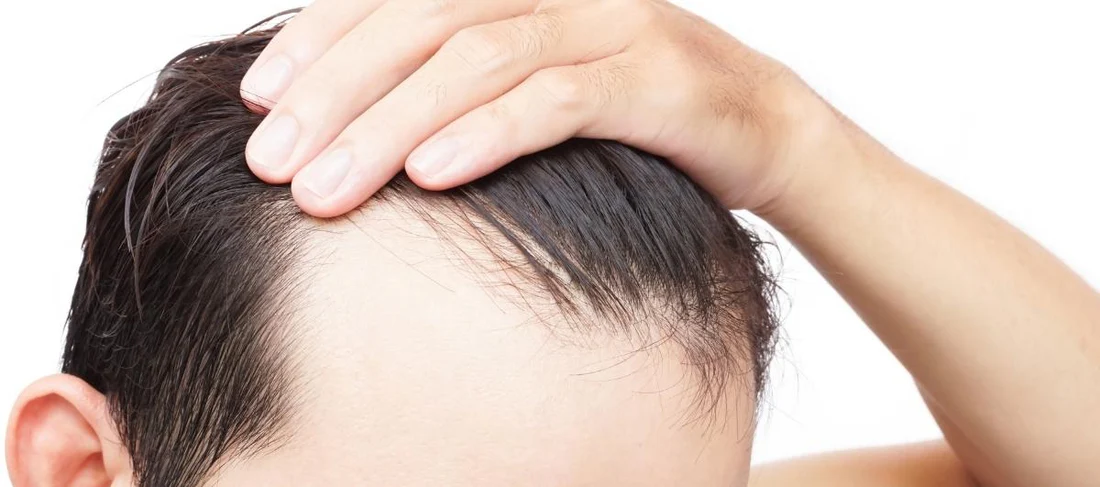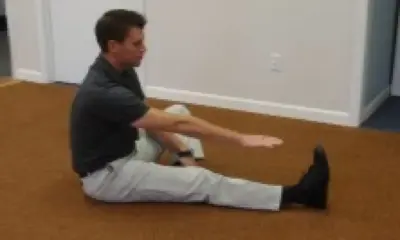Lifestyle
How to Stop Hairfall
Stop hair fall effectively! Learn lifestyle changes, nutritional support, proper hair care, and when to seek professional help for healthier hair.
Hair fall is a common concern affecting millions worldwide, regardless of age or gender. While losing 50-100 strands of hair a day is considered normal as part of the natural hair growth cycle, excessive or sudden hair fall can be distressing and indicate an underlying issue. Understanding the various factors that contribute to hair loss, from genetics to lifestyle, is the first step towards effectively managing and stopping it.
The human hair growth cycle involves three main phases: Anagen (growth), Catagen (transition), and Telogen (resting/shedding). Disruptions to this cycle, whether due to hormonal imbalances, nutritional deficiencies, stress, or external damage, can lead to increased shedding. Historically, remedies for hair loss have ranged from traditional herbal treatments to modern pharmaceutical interventions, reflecting a long-standing human desire to preserve hair density and vitality.
Meta Description: Stop hair fall effectively! Learn lifestyle changes, nutritional support, proper hair care, and when to seek professional help for healthier hair.
How to Stop Hairfall
Stopping hair fall requires a holistic approach that addresses potential internal and external causes. It’s crucial to identify the root cause, which can range from genetic predisposition and hormonal imbalances to nutritional deficiencies, stress, and improper hair care. While some conditions require medical intervention, many forms of hair fall can be managed or reduced through lifestyle adjustments and consistent care.
Step 1: Identify the Root Cause (and Consult a Professional)
Before embarking on any treatment, understanding why you are experiencing hair fall is paramount.
- Observe Your Hair Fall Pattern:
- Diffuse Thinning: Hair loss all over the scalp can suggest nutritional deficiencies, stress (telogen effluvium), or underlying health issues.
- Receding Hairline/Bald Patches: More localized hair loss patterns often point towards genetic hair loss (androgenetic alopecia), alopecia areata, or fungal infections.
- Sudden vs. Gradual: Sudden and rapid hair loss might indicate a specific trigger (stress, illness, medication), while gradual thinning is more common in genetic conditions.
- Review Your Lifestyle and Health:
- Stress Levels: High chronic stress is a known contributor to telogen effluvium.
- Diet: Are you getting adequate protein, vitamins, and minerals?
- Medications: Some medications can have hair loss as a side effect.
- Recent Illness/Surgery: Major physiological stress can trigger temporary hair fall.
- Hormonal Changes: Pregnancy, childbirth, menopause, thyroid issues, or PCOS can impact hair.
- Consult a Doctor or Dermatologist:
- Crucial Step: This is the most important step for persistent or severe hair fall. A doctor can perform blood tests (to check for deficiencies like iron, Vitamin D, B12, or thyroid issues), scalp examination, and diagnose conditions like androgenetic alopecia or alopecia areata. They can also rule out more serious medical conditions.
- A professional diagnosis is essential for effective treatment.
Step 2: Adopt a Hair-Healthy Diet and Lifestyle
Nutrition and overall well-being play a significant role in hair health.
- Prioritize Nutrient-Rich Foods:
- Protein: Hair is made of protein. Include lean meats, fish, eggs, dairy, legumes, nuts, and seeds in your diet.
- Iron: Iron deficiency (anemia) is a common cause of hair fall. Consume iron-rich foods like spinach, lentils, red meat, and fortified cereals. Pair with Vitamin C (citrus fruits, bell peppers) to enhance absorption.
- Zinc: Found in nuts, seeds, whole grains, and meat, zinc is vital for hair tissue growth and repair.
- B Vitamins (especially Biotin): Biotin (Vitamin B7) is often linked to hair health. Found in eggs, nuts, sweet potatoes. Other B vitamins support healthy blood flow to the scalp.
- Vitamin D: Low Vitamin D levels are associated with hair loss. Get sun exposure (safely) and consume fortified foods or supplements as advised by a doctor.
- Omega-3 Fatty Acids: Found in fatty fish (salmon, mackerel), flaxseeds, and walnuts, these support scalp health and hydration.
- Manage Stress Effectively:
- Practice Relaxation Techniques: Incorporate yoga, meditation, deep breathing exercises, or mindfulness into your daily routine.
- Ensure Adequate Sleep: Aim for 7-9 hours of quality sleep per night.
- Engage in Physical Activity: Regular exercise helps reduce stress levels.
- Stay Hydrated:
- Drink plenty of water throughout the day to keep your body and hair follicles well-hydrated.
Step 3: Implement Gentle Hair Care Practices
Aggressive styling and chemical treatments can exacerbate hair fall.
- Shampoo and Condition Gently:
- Choose Mild Products: Use sulfate-free and paraben-free shampoos and conditioners designed for hair fall control or sensitive scalps.
- Wash Frequency: Wash your hair as often as needed, but avoid excessive washing or harsh scrubbing, which can irritate the scalp.
- Lukewarm Water: Use lukewarm water, as very hot water can strip natural oils.
- Handle Wet Hair with Care:
- Wet hair is fragile. Avoid aggressive towel drying. Gently blot excess water with a microfiber towel or an old cotton t-shirt.
- Detangle Carefully: Use a wide-tooth comb to detangle wet hair, starting from the ends and working your way up. Do not pull or yank.
- Minimize Heat Styling:
- Limit Use: Reduce the frequency of using blow dryers, straighteners, and curling irons.
- Lower Heat Settings: If you must use heat, always use a heat protectant spray and the lowest effective heat setting.
- Avoid Tight Hairstyles:
- Constantly pulling hair into tight ponytails, braids, or buns can cause traction alopecia, a type of hair loss from prolonged tension on the hair follicles. Opt for looser styles.
- Be Gentle with Brushing:
- Use a soft-bristle brush and avoid over-brushing. Start at the ends and work your way up to minimize breakage.
- Limit Chemical Treatments:
- Reduce the frequency of harsh chemical treatments like perms, relaxers, and excessive coloring, as these can damage the hair shaft and follicles.
Step 4: Consider Topical Treatments and Supplements (Under Guidance)
Once underlying health issues are addressed, some topical applications and supplements can support hair growth.
- Topical Treatments:
- Minoxidil (Rogaine): An FDA-approved over-the-counter topical treatment available in 2% and 5% solutions/foams. It helps stimulate hair growth and slow hair loss. Consistency is key, and results can take months. Consult a doctor before use.
- Natural Oils/Serums: Some people find benefit from massaging the scalp with natural oils like rosemary oil, peppermint oil, or castor oil, which are believed to improve blood circulation to the scalp. Always do a patch test first.
- Supplements:
- Biotin, Vitamin D, Iron, Zinc: If blood tests reveal deficiencies, your doctor may recommend supplements. Do NOT self-prescribe high doses of supplements without medical advice, as excessive intake can be harmful.
- Collagen: Some research suggests collagen supplements might support hair structure.
- Saw Palmetto: An herbal supplement sometimes used for hormonal hair loss, though scientific evidence is mixed.
- Platelet-Rich Plasma (PRP) Therapy:
- A medical procedure where a patient’s own blood is processed to concentrate platelets, which are then injected into the scalp to stimulate hair follicles. This is a newer treatment, typically administered by dermatologists.
Step 5: Medical Treatments (For Specific Conditions)
For certain types of hair fall, professional medical intervention is necessary.
- Finasteride (Propecia): An oral medication (prescription only) primarily for men with androgenetic alopecia (male pattern baldness). It works by blocking the production of DHT, a hormone that shrinks hair follicles.
- Corticosteroids: Used for inflammatory conditions like alopecia areata to suppress the immune response that attacks hair follicles.
- Spironolactone: An oral medication sometimes prescribed off-label for women with hormonal hair loss.
- Hair Transplant Surgery: For advanced cases of permanent hair loss, surgical options like hair transplantation can relocate hair follicles from denser areas to balding areas.
It is crucial to emphasize that any medical treatment or supplement should only be used under the guidance of a qualified doctor or dermatologist. Self-diagnosis and self-treatment can be ineffective or even harmful.
By combining proper diagnosis with a nutrient-rich diet, gentle hair care, stress management, and, if needed, targeted treatments, you can significantly improve your hair health and effectively reduce or stop hair fall.
Frequently Asked Questions (FAQ)
Q1: Is it normal to lose hair every day? How much is too much?
A1: Yes, losing hair every day is normal. The average person loses about 50 to 100 strands of hair per day as part of the natural hair growth cycle. You might notice more hair fall on wash days. If you’re consistently losing significantly more than 100 strands, seeing noticeable thinning, or finding large clumps of hair, it’s considered excessive and warrants attention.
Q2: Can stress really cause hair fall?
A2: Yes, severe or chronic stress can absolutely cause hair fall, often manifesting as a condition called telogen effluvium. This condition pushes a large number of hair follicles into the resting (telogen) phase prematurely, leading to increased shedding a few months after a stressful event. Managing stress is a crucial step in resolving this type of hair fall.
Q3: Are there any home remedies or natural oils that can help stop hair fall?
A3: While scientific evidence for many home remedies is limited, some natural oils are anecdotally (and in some preliminary studies) linked to scalp health and hair growth stimulation. These include rosemary oil, peppermint oil, and castor oil, often used in scalp massages to improve circulation. Always perform a patch test before applying any new oil to your scalp to check for allergic reactions. It’s important to view these as supportive measures, not primary treatments for underlying medical conditions causing hair loss.
Q4: When should I see a doctor or dermatologist for hair fall?
A4: You should consult a doctor or dermatologist if you:
- Notice a sudden and significant increase in hair shedding.
- See noticeable thinning or bald patches developing.
- Experience scalp itching, redness, pain, or scaling along with hair fall.
- Suspect a nutritional deficiency, hormonal imbalance, or medical condition.
- Are concerned about the aesthetic impact of your hair loss. A professional can accurately diagnose the cause and recommend appropriate treatment.
Q5: Can hair fall be reversed?
A5: The reversibility of hair fall depends entirely on its cause.
- Temporary hair fall (like telogen effluvium due to stress, illness, or postpartum) is usually fully reversible once the underlying trigger is resolved.
- Nutritional deficiency-related hair fall is reversible with proper supplementation and diet.
- Genetic hair loss (androgenetic alopecia) cannot be fully reversed, but its progression can often be significantly slowed, and hair regrowth can be stimulated with consistent medical treatments like minoxidil or finasteride.
- Permanent hair loss due to scarring alopecia or advanced male pattern baldness is generally not reversible without surgical intervention like hair transplantation.



















